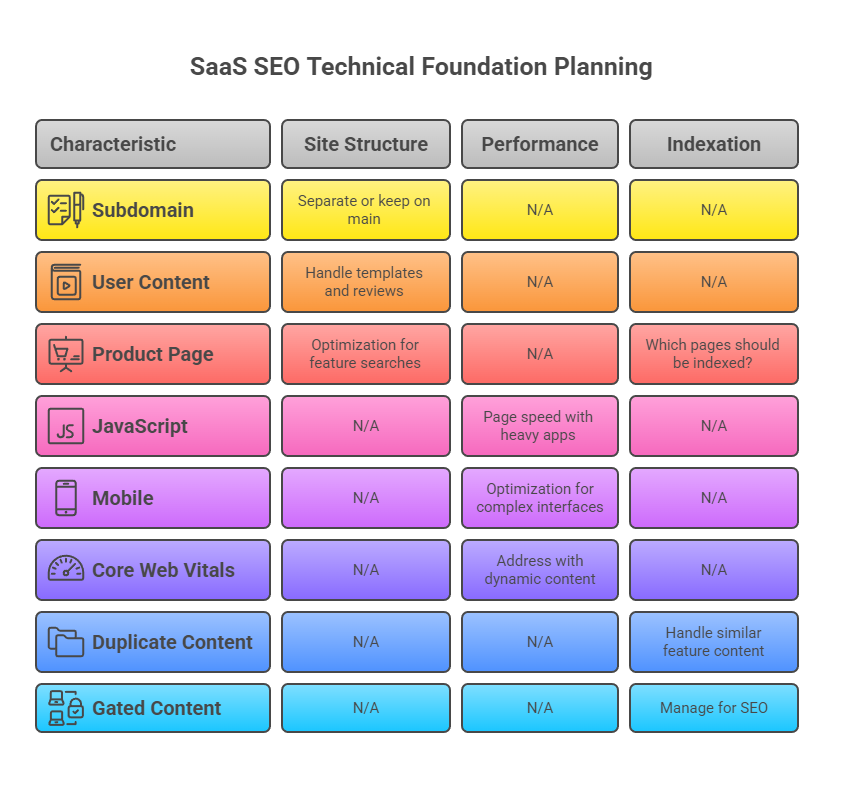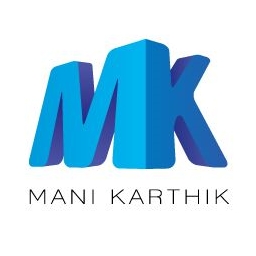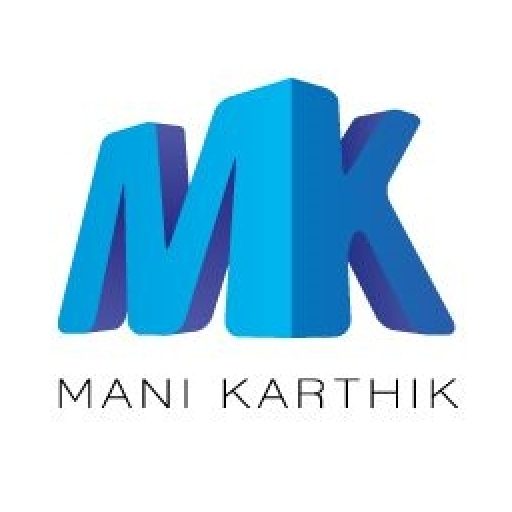How to Plan an SEO Strategy for Your SaaS Website

“We need an SEO strategy.”
I hear this every week from SaaS founders. Usually right after their latest paid campaign flopped or their CAC hit a scary number.
But here’s the thing. Most “SEO strategies” are just fancy ways to say “let’s blog more and hope.”
Real SEO strategy for SaaS isn’t about keyword lists or content calendars. It’s about building a system that turns search traffic into pipeline.
Here’s how to plan one that actually works.
Stop Right Here If…
You Don’t Have Product-Market Fit Yet
If you don’t have product market fit yet, investing in SEO could potentially be a disastrous business decision.
I’ve seen too many early-stage founders burn through runway chasing SEO while their product still sucks.
SEO takes 6-12 months to show results. If you’re still figuring out what you’re building or who wants it, focus there first.
Come back to SEO when you know people actually want what you’re selling.
You Think This Is a Quick Win
SEO, especially when you’re B2B, is not a “let’s see how we do with a quick $500 test this month” channel.
It’s longer-term than outbound or paid but has a far more sustainable cost per acquisition when done right.
Every week someone asks me: “Can we test SEO for three months?”
No. You can’t test gravity for three months either.
You need a clear strategic direction, goals, milestones, and tactics – or you’re going to waste months doing random acts of content and wondering why nothing’s moving.
SEO is a 12-18 month commitment minimum. If you can’t commit to that timeline, stick with paid ads.
The Real SaaS SEO Strategy Framework
Step 1: Define Your Business Challenge
A SaaS SEO strategy defines top-down how a business is leveraging its competitive advantages to solve its core challenges through SEO.
Most strategies start with “we want more traffic.” Wrong.
Start with your real business problem:
- “We’re spending $200 CAC on ads and need a cheaper channel”
- “Our sales team needs more qualified leads”
- “We’re unknown in our category and need brand awareness”
Your SEO strategy should solve a specific business challenge.
Not just generate “traffic.”
Step 2: Map Your Competitive Advantages
What do you do better than anyone else? What unique insights do you have?
These become your content advantages. The brands consistently mentioned in industry publications, cited in research, user forums, and PR articles, and recognized as thought leaders are more likely to get recommended.
Real example: A client in HR tech had the best integration with Slack. We built an entire content hub around “Slack + HR workflows” that nobody else could match.
Find your unique angle. Then own it completely.
Step 3: Choose Your Approach

The approach is “the what” of the SEO strategy, this is the framework that guides the direction and differentiation of the strategy.
You have three main options:
Demand Capture: Target people already searching for solutions like yours. High-intent, lower volume. Best for established categories.
Problem Education: Target people who have the problem but don’t know solutions exist. Lower intent, higher volume. Best for new categories.
Competitive Displacement: Target people comparing you to competitors. Medium intent, medium volume. Best when you’re an underdog with clear advantages.
Pick one primary approach. Don’t try to do everything.
Step 4: Set Outcome-Based Goals
The best SaaS companies set outcome-driven goals – like “becoming the go-to resource for HR tech insights.”
These goals aren’t set in stone; they evolve as the business grows.
Forget vanity metrics. Set goals that matter:
Pipeline Goals:
- 50 qualified MQLs per month from organic by month 12
- $100K pipeline influenced by organic content by month 18
Authority Goals:
- Become the top 3 cited source for [your category] insights
- Get mentioned in 10 industry reports per year
Market Position Goals:
- Own the search results for [specific use case]
- Capture 30% share of voice for [category] keywords
These goals give you direction. Traffic is just a byproduct.
SaaS SEO strategy Planning Process
Content Strategy Development

Unlike consumer-focused SEO, B2B SaaS SEO must account for the unique challenges presented by enterprise software purchases: longer consideration periods, multiple stakeholders with different priorities, and the need to demonstrate both business value and technical capability.
Map content to your actual buyer journey:
Problem Aware (Top-Funnel):
- “Why is [current process] broken?”
- “[Industry] challenges in 2025”
- “Signs you need [category] software”
Solution Exploring (Mid-Funnel):
- “[Product category] buyer’s guide”
- “How to evaluate [category] tools”
- “[Use case] best practices”
Vendor Comparing (Bottom-Funnel):
- “[Your product] vs [competitor]”
- “[Your product] pricing guide”
- “[Your product] implementation”
SaaS marketers should be focusing on producing more middle funnel content to address the needs of users that have passed the information gathering stage.
Technical Foundation Planning

Technical SEO requirements unique to SaaS include optimizing for dynamic content, managing large-scale product documentation, ensuring proper indexing of user-generated content, and handling complex site architectures with multiple subdomains or microsites.
Plan for SaaS-specific technical challenges:
Site Structure:
- Separate subdomain for docs or keep on main domain?
- How to handle user-generated content (templates, reviews)
- Product page optimization for feature searches
Performance:
- Page speed with heavy JavaScript apps
- Mobile optimization for complex interfaces
- Core Web Vitals with dynamic content
Indexation:
- Which product pages should be indexed?
- How to handle duplicate content from similar features
- Managing login-gated content for SEO
Resource Allocation
The SEO structure in 2025 means adapting to both conventional search engines and AI-powered discovery systems.
Budget for the full stack:
Essential Tools (Tier 1):
- Ahrefs or SEMrush: $200-500/month
- Google Analytics 4: Free
- Google Search Console: Free
- Rank tracking: $50-100/month
Growth Tools (Tier 2):
- Content optimization: $100-300/month
- Technical SEO crawler: $100-200/month
- AI writing assistant: $50-100/month
Team Planning:
- Content lead: 0.5-1 FTE
- Technical resource: 0.25 FTE
- Designer for visuals: 0.25 FTE
Creating Your SEO Roadmap
Months 1-3: Foundation
Set up tracking and fix obvious technical issues:
Week 1-2:
- Install GA4 and Search Console
- Audit current site for technical problems
- Competitor research and keyword mapping
Week 3-8:
- Fix critical technical issues
- Create content calendar for first quarter
- Begin authority-building outreach
Week 9-12:
- Publish first content pieces
- Start link building for existing pages
- Establish reporting cadence
Months 4-8: Content Engine
Scale content production and optimization:
- Publish 2-4 in-depth pieces per month
- Optimize existing pages based on performance data
- Build topic clusters around your main themes
- Expand into new keyword territories
Months 9-12: Acceleration
Double down on what’s working:
- Identify your highest-converting content types
- Expand successful topics into full content hubs
- Begin advanced tactics (programmatic SEO, etc.)
- Plan for year two growth
Measuring What Matters

Pipeline Metrics
Track how SEO impacts your business:
Leading Indicators:
- Organic sessions to target pages
- Content piece rankings for target keywords
- Email signups from organic traffic
- Demo requests from organic visitors
Lagging Indicators:
- MQLs attributed to organic
- Pipeline value influenced by SEO
- Closed deals with organic touchpoints
- Customer acquisition cost for organic channel
Authority Metrics
According to our client data, brands with established authority in their niche are receiving significantly more referral traffic from LLM platforms than competitors with similar keyword rankings but weaker brand presence.
Track how you’re building industry authority:
- Brand mentions across industry publications
- Backlinks from authoritative industry sites
- Speaking opportunities and conference invites
- Citations in AI-powered search results
Content Performance
Know which content drives results:
- Pages driving the most qualified traffic
- Content pieces generating the most backlinks
- Topics with the highest engagement rates
- Conversion rates by content type and funnel stage
Common Planning Mistakes

Starting Without Sales Team Input
Your sales team talks to prospects every day. They know the real objections, questions, and concerns.
Plan your content calendar with sales input. Not keyword tools.
Focusing Only on Top-Funnel
Many SaaS businesses make the blunder of creating content without any definitive goal or preset strategy in mind. This process of producing content is like shooting blind arrows aimlessly in the air.
Everyone wants to rank for big, obvious keywords. But bottom-funnel content often converts better.
“[Product] pricing” gets less traffic than “project management tips.” But which visitor is more likely to buy?
Ignoring Content Distribution
Creating content is 20% of the work. Distribution is 80%.
List out all of your owned, earned, and paid channels, and build a strategy to ensure your content hits all of them.
Plan how each piece gets promoted across email, social, partnerships, and PR.
Not Planning for AI
The 2025 SaaS SEO landscape demands a dual approach to keyword strategy – one for traditional search engines and another for Large Language Models (LLMs).
Your content needs to work for both Google and ChatGPT. Plan for both from day one.
The Real Timeline

Months 1-3: Setup and Foundation
- Minimal traffic impact
- Focus on technical setup and initial content
- Begin building industry relationships
Months 4-6: Early Traction
- 20-30% increase in relevant organic traffic
- First content pieces start ranking
- Initial link building results appear
Months 7-12: Momentum Building
- 100-200% increase in qualified organic traffic
- Multiple content pieces ranking on page 1
- Meaningful pipeline contribution begins
Months 13-18: Compounding Returns
- 300-500% increase from baseline
- SEO becomes a major pipeline channel
- Industry authority clearly established
These are realistic timelines if you execute consistently. Don’t expect miracles in month three.
When to Hire Help
DIY If You Have:
- At least one person who can commit 20+ hours per week
- Budget for tools and content creation
- Patience for a 12+ month timeline
Hire an Agency If You:
- Need results faster (agencies have experience and tools)
- Want to focus on your core business
- Have budget for $5K+ per month
Red Flags in SEO Partners:
- Promise specific rankings or timeline guarantees
- Focus only on traffic, not business outcomes
- Can’t show SaaS client case studies
- Push generic “content marketing” approaches
The Bottom Line
I believe that B2B SaaS SEO is about one thing: sustainable, recurring revenue growth. Period.
A real SEO strategy isn’t about keywords and content calendars.
It’s about building a system that:
- Attracts your ideal customers when they’re ready to buy
- Establishes your company as the category authority
- Reduces your dependence on expensive paid channels
- Creates compounding returns over time
The companies winning at SEO in 2025 aren’t the ones with the biggest budgets. They’re the ones with the clearest strategies.
They know exactly who they’re targeting, what problems they’re solving, and how search fits into their overall growth model.
Everything else is just tactics.
Ready to build an SEO strategy that actually drives pipeline? I’ll review your current approach and show you exactly what needs to change. No generic recommendations – just a real plan based on your specific business challenges.

